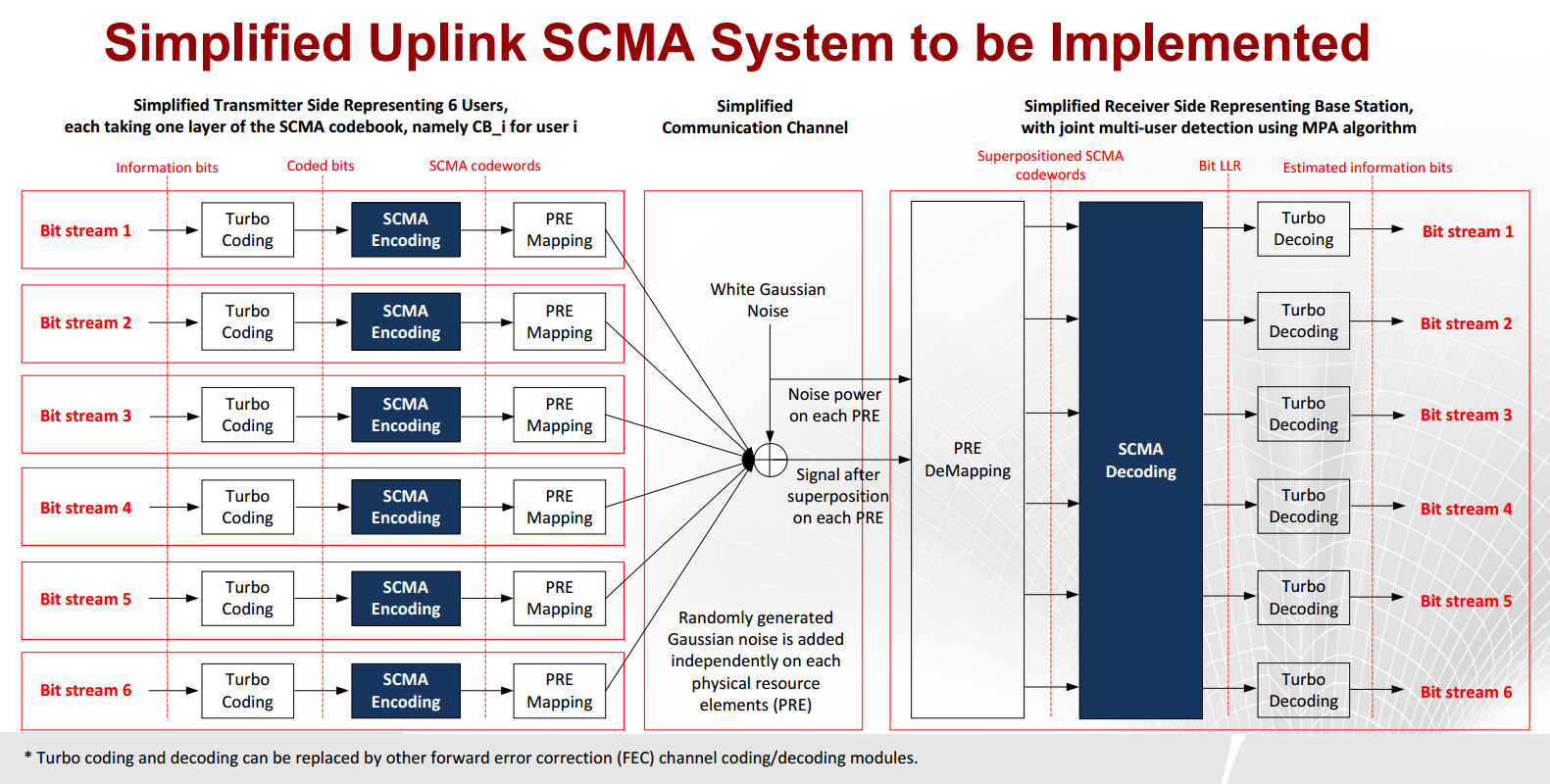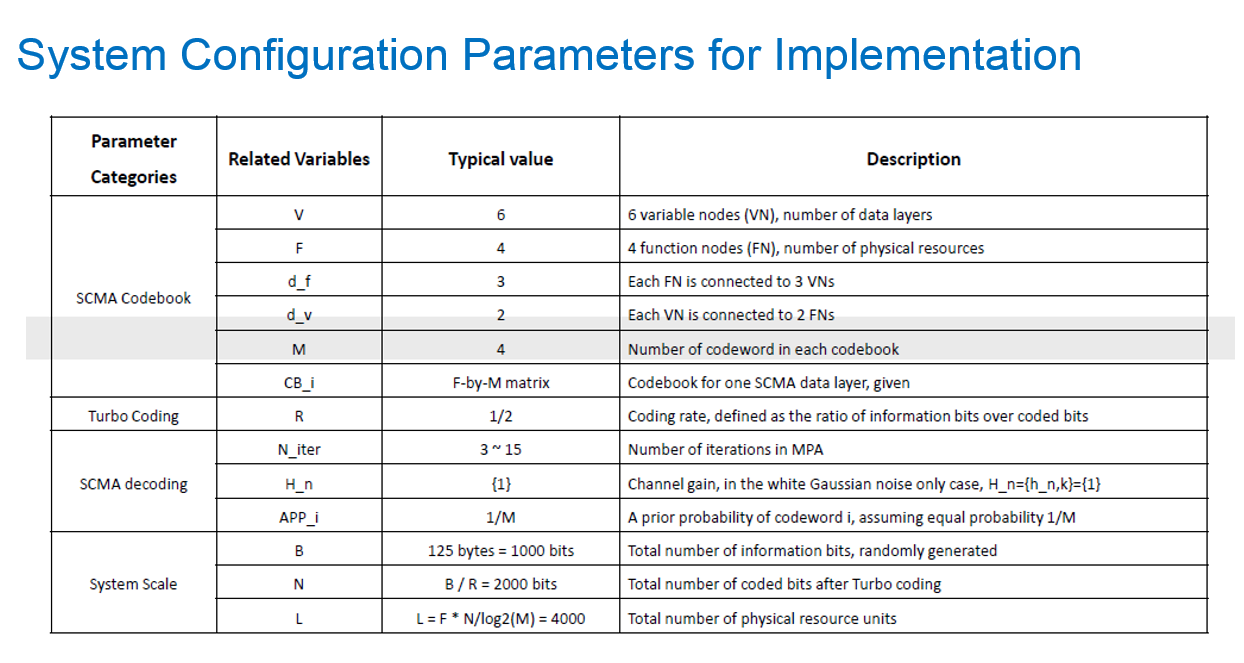Algorithm 2
SCMA (Sparse Code Multiple Access) :
Massive Connectivity & Low Latency

|
|
| Sparse Code Multiple Access is next generation wireless communication access |
|
Multiple access is one of the key technologies of wireless communication physical layer, which allows the radio base station to distinguish between a plurality of end-user services simultaneously. Existing systems employ orthogonal multiple access, i.e., by a plurality of users in different dimensions (frequency, time, code classification) orthogonal division of resources to the access. Multiple access OFDMA Technology employed in i 4G systems is one of them, but it is a two-dimensional orthogonal grid when the frequency resource is divided to access different users.5G supports a rich business scenarios. each scenario needs different waveform parameters. It’s a basic need to dynamically select and configure the waveform parameters based on the scenario, while taking into account the advantages of traditional CP-OFDM. Because the access to resources with orthogonal multiple access technology is proportional to the number of users, it can not meet the 5G capacity, massive connectivity and low latency access demand. Thus non-orthogonal multiple access will become the 5G Multiple Access research focuses access. SCMA, sparse code multiple access, is designed to generate demand should 5G a non-orthogonal multiple access technology. At the sending end SCMA coded bits are mapped to a codeword, the receiver decodes completed by multiuser detection by multi-dimensional and sparse spread modulation. Compared to the 4G OFDMA technology, it can achieve the same amount of resources in conditions, while the service more users, thus effectively improve the overall system capacity. According to the material described in the encoding and decoding of the SCMA principles, design and implementation to simplify the SCMA uplink communication system, and verify performance. Figure1: Simplified Uplink SCMA System to be Implemented ( Click picture to enlarge )  Figure2: System Configuration Parameters for Implementation ( Click picture to enlarge )  |
|
|
Requirements:
According to the introduction of the SCMA training materials, to achieve a simplified (abstract, rather than a complete communication system based on existing) SCMA uplink multiple access communication system, focusing on the development of the SCMA and low complexity encoding and decoding module verification. Works format:
1. Complete simplify SCMA uplink multiple access system design documents, especially low-complexity decoder design. 2. Complete simplify SCMA uplink multiple access system Matlab simulation, and gives BER vs Eb / No performance curve falls. 3. Complete the SCMA uplink multiple access system simplifies FPGA logic design and implementation of the system, test its performance, test and simulation curve curve comparison and report resource usage. Delivery Material:
1. SCMA uplink multi-access system design documents, code and simulation results. 2. FPGA design specifications, code, and test results of the bit file. Winner Selection Criteria:
First Round
1. Complete simplify SCMA uplink multiple access system design documents, properly understood SCMA system. 2. Complete the system link Matlab / C simulation, and gives BER vs Eb / No performance curve falls. 3. Provide a framework and methodology for FPGA platform competition SCMA system design. Second Round
1. Complete the FPGA logic design document, the successful completion of FPGA systems simplify SCMA uplink multiple access system FPGA development, correct decoding rate of more than 99.9%. 2. Test BER vs Eb / No performance waterfall curve, and with simulation (allow refresh optimization) comparison, the difference is less than 1dB. 3. FPGA implemented algorithm design, data throughput, processing delays and FPGA chip resource use. |
|
| Reference Material | |
|
1. 1st 5G Algorithm Innovation Competition-ENV1.0 - SCMA  |
|
